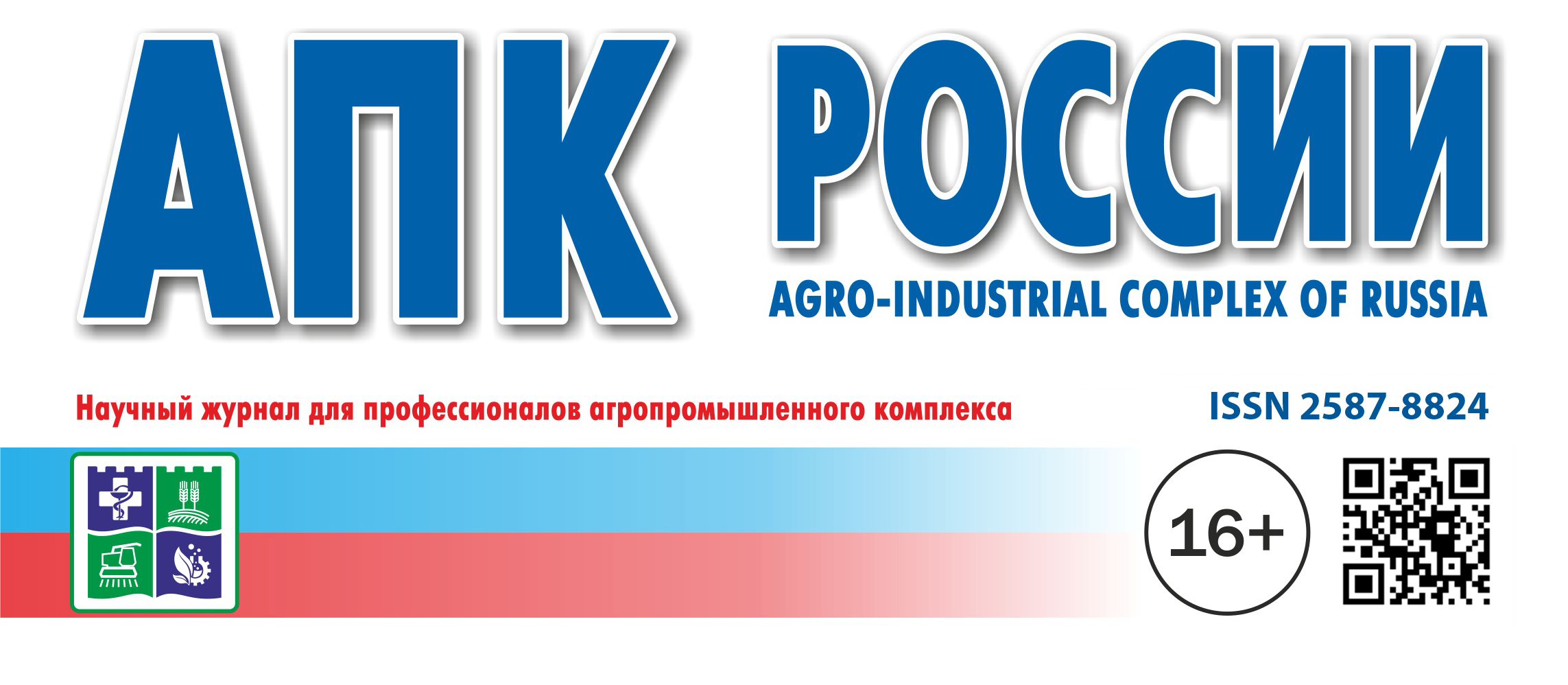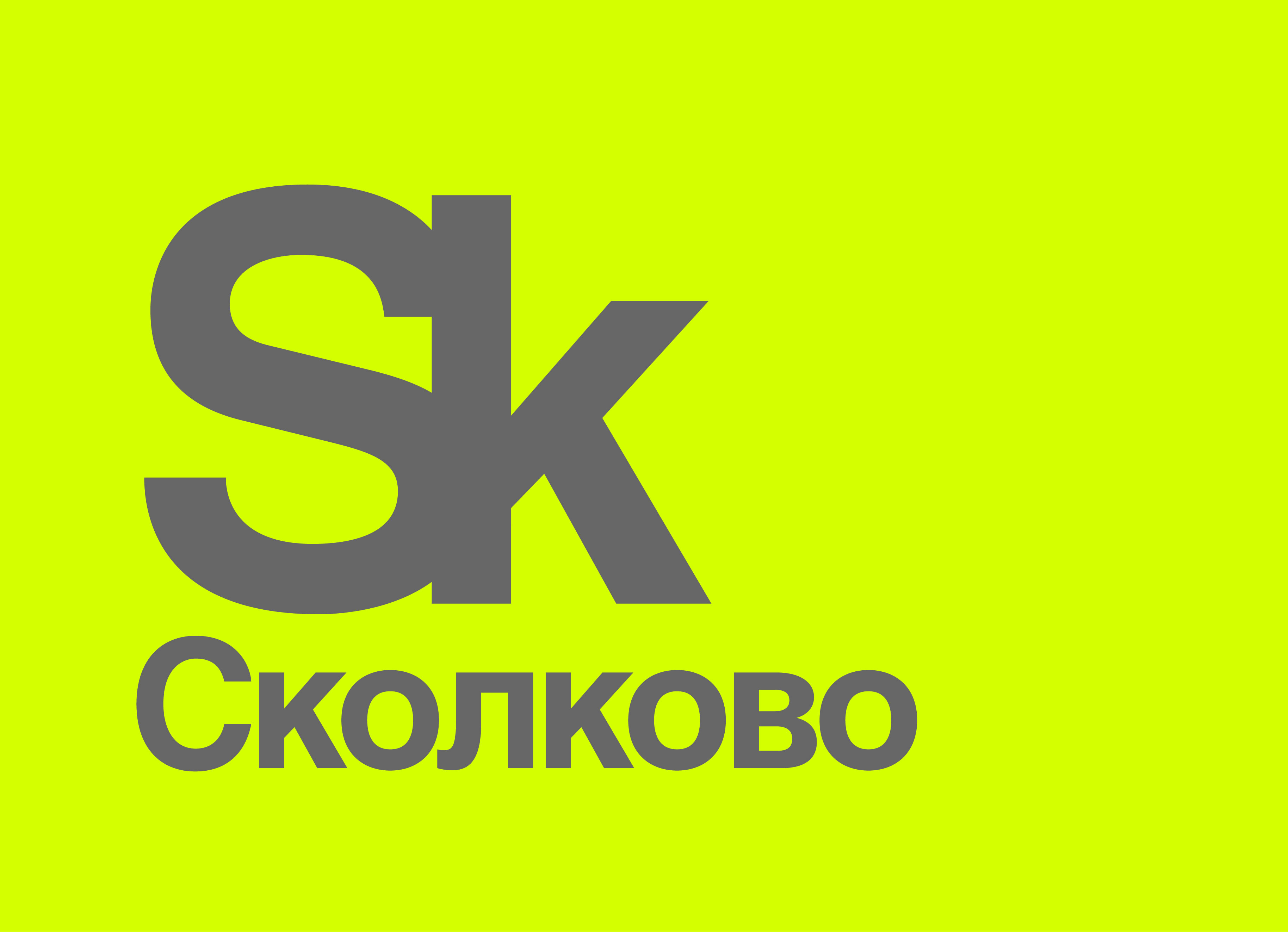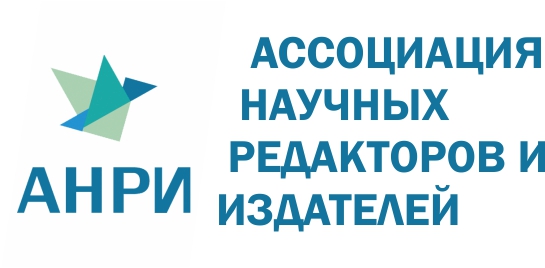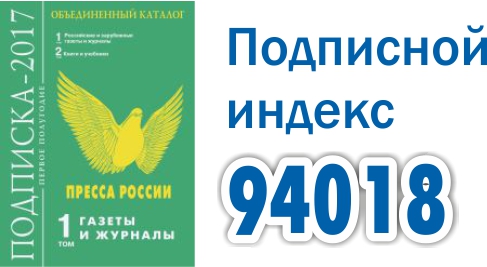Guidelines for granting manuscripts to the Journal of Research and Practice «Agro-Industrial Complex of Russia»
The journal publishes the results of completed original studies (review, theoretical and experimental articles) on the problems of the development of the agro-industrial complex, the agro-food potential of the regions (tractor and agricultural engineering, veterinary medicine and animal husbandry, agronomy, food and processing industry), which have not been published anywhere before and not submitted to publications in another edition.
The authors are responsible for the authenticity and originality of the materials. The authors guarantee that the text of the article is original (at least 75% of originality according to the Anti-Plagiarism system) and is published for the first time.
Article presented in soft and hard copy (preferably), should correspond to the profile and scientific level of the journal.
The volume of the text of the article should not exceed 15 pages for a doctor of science, for other authors the volume of the article is from 8 to 10 pages. The authors of the articles are responsible for the use of data not intended for open publication in accordance with the legislation of the Russian Federation.
The article should contain: abstract, keywords, information about the authors (last name, first name, patronymic of the authors; place of work, present post; academic degree, title; address for correspondence, e-mail and telephone numbers for communication, ORCID of the author), list of references.
The abstract must be presented as an independent finished material, based on the information presented in the work, in the size of 200–250 words. The abstract should be structured and contain: the purpose of the research, part of the original methodology, the results and their interpretation, necessarily indicating quantitative data, conclusions that reflect the practical significance and prospects of the study. You should not give references and discuss literary data. The main purpose of the abstract is to show the results of our own research using digital material, the conditions and experimental schemes in which they were obtained, and not only the relevance of these works. For foreign readers, the abstract is the only source of information about the content of the article.
Keywords should reflect the main content of the article. We recommend using terms that define the subject area and include other important concepts that will facilitate and expand the possibilities of finding an article by means of an information retrieval system.
The article should contain the following main sections, highlighted by appropriate headings:
1. Introduction
An introductory part in which the authors justify the relevance of the work, scientific novelty, significance, a brief overview of the problem being solved and clearly formulate the purpose of the work and tasks if the goal requires the solution of several problems at once. References to the cited literature are given in numerical order in square brackets. Serial links should not include more than 3 sources in a row. The scientific novelty of the work should be clearly articulated in the introduction; it may not be general scientific, but sectoral. The article should not have factual errors, conclusions and conclusions should not contradict the known laws of nature and general scientific truths.
2. Material and research methods
The description of the methodology should be detailed enough to allow reproducibility of studies. In this case, only the original part of the methodology is described in detail; references to standard methods should be limited to references to their description. When describing experimental work, there should be information about the objects of study. For works of an experimental nature, it is obligatory to indicate methods for testing statistical hypotheses, statistical criteria and the level of significance of their critical values.
For scientific abstract reviews, the source search algorithm should be described in detail to review which search bases were used (Scopus, Web of Science, Elibrary databases).
3. Results and discussion
The presentation of the results should consist in identifying the patterns found, and not in a mechanical retelling of the contents of tables and graphs. Graphs and tables should not duplicate each other and textual material. Graphical presentation of results is justified when used to visualize identified and statistically proven trends. In other cases, a tabular form of presentation of experimental data is preferable. During the discussion of the results, it is recommended to compare the information obtained by the authors with the information available in the literature and show what is its novelty. If necessary, the results and discussions can be placed in separate sections.
4. Conclusions (conclusion)
The section includes several (2-5) specific proposals about the patterns identified during the research in accordance with the stated goal, without duplicating the main sections of the article.
5. References (GOST R 7.0.5–2008)
The bibliography should contain references to modern scientific publications older than 10 years (with the exception of basic fundamental works). At the same time, at least 50% of references are made to publications in publications included in the core of the RSCI, at least 30% to sources indexed in the Web of Science and Scopus citation databases. References to publications from conference proceedings, abstracts of dissertations should be limited. Only links to peer-reviewed electronic resources are allowed.
When compiling the list of references, the names and initials of the authors, the names of journals or collections, publishers, as well as the signs necessary for the bibliographic description of the cited work (periods, commas, spaces, hyphens, italics, etc.) should be carefully verified. Both the volume and (if available) the number of the periodical are given. It is advisable to use the citation recommendations posted on the official websites of the journal. in. If the cited publication has a DOI, its indication when making a link is mandatory. For each source, all authors are indicated, without abbreviations, etc., etal.
Educational publications, reference books, materials presented in sources without scientific review are not used in the list of references.
Self-citation, as well as citation of other authors, must be reasonable and correspond to the subject and objectives of the scientific work. In accordance with the ethics of scientific publications, the degree of self-citation should not exceed 25%, if possible, at the level of 10%.
For scientific abstract reviews
The author does not conduct experiments, does not put forward theories and does not check the results of other researchers for reliability. He analyzes the work of scientists and can include his articles on the topic in the list of sources.
The list of references includes only materials published in peer-reviewed publications or preprints that are in the public domain. Articles from popular science magazines, print and online encyclopedias, media, links to tutorials are not allowed. The list of references should contain at least 40 sources, mainly from the last 10 years, priority is given to articles and preprints published in high-ranking scientific journals over the past 5 years.
Reviews are written in an academic style in the 3rd person, in the past tense, with a clear structure, using industry-accepted terminology. The presence of lyrical digressions, violation of the logic of the narrative, everyday and slang vocabulary, emotional statements, grammatical and spelling errors are not allowed.
Supporting materials - infographics, illustrations, tables - should be related to the chosen topic. Often these are inserts from the sources under consideration or the result of the author's processing of the information presented in them.
The compiler(s) of the review does not list the materials he found in order, but evaluates how deeply the topic has been studied and what aspects of it are considered in individual sources. At the end of the main part, the author draws conclusions about the significance of the articles cited, points out questions that remain unsolved, evaluates the contribution of colleagues to the coverage of the problem. Concluding the review, the author offers conclusions and recommendations for the study of the topic in future works, lists the directions and methods of research.
The author (authors) fills out the questionnaire when submitting the article to the editors.
Articles from graduate students and students can be published only after review by the supervisor, who must confirm the approval of the work for publication in the questionnaire.
The authors must provide the results of the check in the Anti-plagiarism system, using all available check modules for checking. The editorial board has the right to conduct its own check for anti-plagiarism and if a discrepancy is found in the results of the check, the article may be rejected.
Failure to comply with the above requirements in full is a reason for refusing to accept the article material.
Articles that meet the specified requirements are registered by the editors.
The decision to publish an article is made based on the results of review and discussion by the editorial board.
Information about the passage of the article, the authors can clarify by phone. editors: +7 (351) 266-65-20, as well as by e-mail: rusapk@bk.ru.
By submitting his materials for publication, the author hereby consents to the placement of the electronic version of his article on the website and in the scientific library of the university, as well as in the electronic scientific library elibrary in the public domain.
All articles are reviewed, rejected articles are not returned to the authors, the author is notified of the reasons for rejection based on the conclusion of the editorial board.
There is no publication fee.
Article formatting rules
Full name of the authors, place of work, position held; academic degree, title, phone and e-mail, ORCID (each author).
Abstract.
Keywords.
All margins - 2 cm. Text font - Times New Roman. Font size - 14 pt, spacing - 1.5.
Latin letters – italics, letters of Greek and Russian alphabet, indices and index of power, mathematical symbols lim, lg, const, cos, sin, max, min and others – of direct lettering.
Set of the formulas in the standard formulas editors MathType or Equation, font style Times New Roman. Only formulas with reference in text must be numbered. Number of the formula must be on the right side in the end of the formula with right page margin alignment. Symbols in the formulas: straight – Russian letters, Greek symbols, acts, numbers; italics – Latin letters.
Tables and drawings must be behind the first link on them in the text after the end of the paragraph. Сharts and statistics must live and saved in a separate folder with marking every drawing, according to the article text. Drawings must be made using software programs and must be provided as separate files: in bit map formats Tiff, JPG, BMP (300 dpi); in vector formats CDR, EPS, wmf; Word drawings – in the format DOC.
Photos resolution must be no less than 600 dpi.
Markings, terms and illustrated material must be in line with in accordance with state standards.
List of references must be in line with must be in conformity with links sequence according to GOST 7.0.5-2008 (you can use the EndNote GOST-Russian 2008 style for formatting). For each source, all authors are indicated, without abbreviations.
All abbreviations must be deciphered.SAMPLE OF ARTICLE DESIGN
UDC
Article title
Full name of authors
Abstract: ………
Keywords: (from 5 to 7 words)
Text. Text. Text. Text. Text. Text. Text. Text. Text. Text. Text. Text. Text. Text. Text. Text. Text. Text. Text. Text. Text. Text. Text. Text. (from 8 to 15 pages)
List of references
1. Babich E. A., Ovchinnikova L. Yu. Results of the use of bulls-producers of foreign selection in breeding herds of Northern Kazakhstan // AIC of Russia. 2017. V. 24. No. 1. S. 19–23.
2. Zhuravel N. A., Miftakhutdinov A. V. Labor rationing during vaccination of replacement poultry // Veterinary, biological and agricultural sciences for the agro-industrial complex of Russia: mater. International scientific-practical. conf. Institute of Agroecology, Institute of Veterinary Medicine. Chelyabinsk: South Ural State Agrarian University, 2020. P. 128‒135.
3. Heat stress impacts on broiler performance: a systematic review and meta-analysis / L. L. Liu [et al.] // POULTRY SCIENCE. 2020. V. 99. № 11. Р. 6205‒6211. https://doi.org/10.1016/j.psj.2020.08.019.
4. Pat. RF No. 2122745.1998 Optoelectronic apparatus / D.N. Eskov [et al.], Byul. No. 33.
5. GOST 33956-2016 Milk albumin and albumin pastes. Specifications. M. : Standartinform, 2016. 12 p. Access mode: https://docs.cntd.ru/document/1200142721 (accessed 02.11.2021).
Last name, first name and patronymic, academic degree, academic title, position, full name of the place of work, city, tel.: 8(900)000-00-00.
E-mail.
The editors are provided with:
– electronic version of the article in MS Word. The article file should be named after the name of the first author - PetrovGP.doc. It is not allowed to place several documents in one file;
– Information about authors.




